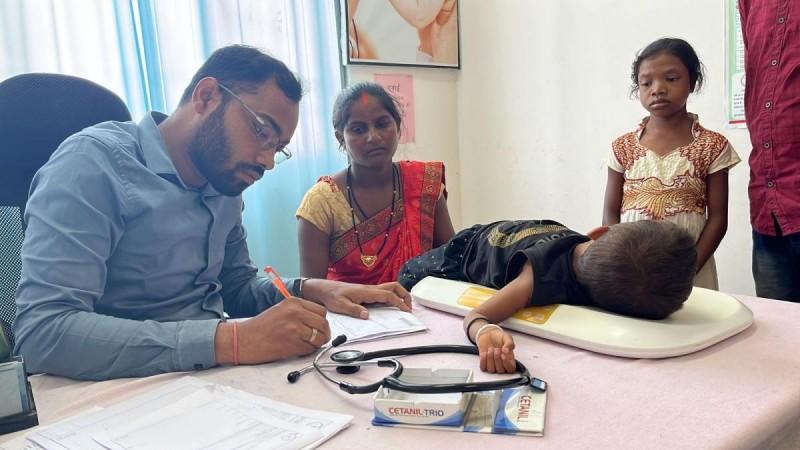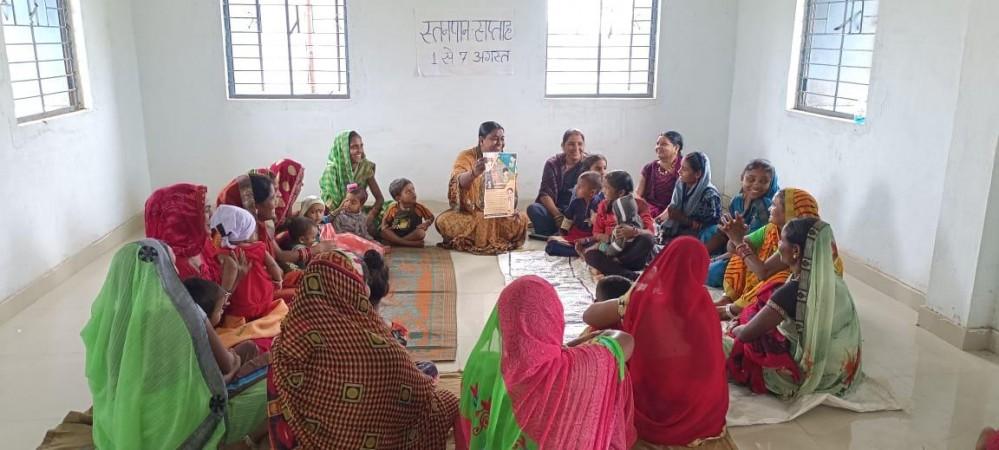In the realm of solving complex challenges, simplicity often emerges as the most effective solution. When it comes to addressing malnutrition, the straightforward approach of nutrition counselling, complemented by diligent progress monitoring, has proven to be a game-changing strategy. The experience in Bemetara District, Chhattisgarh, serves as a compelling example of this impactful intervention.
Over the years, the Indian Government has dedicated significant efforts to ensure food security. Initiatives like mid-day meals in schools, monthly ration distribution, and nutritious meals at Anganwadi Centres under the Prime Minister's Overarching Scheme for Holistic Nourishment (POSHAN) Abhiyaan have been put in place. However, despite these measures, the challenge of nutrition security remains, largely due to a lack of awareness about proper eating and feeding practices, persistent food myths, and the increased consumption of highly processed foods. Nutrition counselling emerges as a promising solution to these complex issues.
![How to address malnutrition: Chhattisgarh district leads by example How to address malnutrition: Chhattisgarh district leads by example [read now]](https://data1.ibtimes.co.in/en/full/789216/how-address-malnutrition-chhattisgarh-district-leads-by-example-read-now.jpg?h=450&l=50&t=40)
It's important to note that the POSHAN Abhiyaan incorporates social and behaviour change communication (SBCC) as a key component. This includes various awareness programs such as bicycle rallies, plantation of Poshan Vatikas, and celebrations of Poshan Maah. However, the concept of nutrition counselling is yet to be fully institutionalized and consistently implemented across states, as indicated in the POSHAN Abhiyaan Progress Report, 2018, which underscores the need for a focused and coherent SBCC Action Plan.
Hence, it is imperative for field staff to undergo comprehensive training in nutritional counselling, and its universal implementation should be mandated across states.

Potth Laika Abhiyaan in Bemetara District, Chhattisgarh
Bemetara District in Chhattisgarh presents an intriguing scenario in the context of malnutrition. Despite being located in fertile plains, unaffected by Naxal insurgency, and economically prosperous, the district faced an alarming number of 3,299 Severe Acute Malnutritioned children (SAM) in December 2022. This number closely resembled those in tribal-dominated and Naxal-affected districts like Bastar, suggesting that the problem was not food accessibility but rather a lack of knowledge regarding proper feeding practices, Suruchi Singh, IAS, who has worked tirelessly towards the awareness of malnutrition and beyond in Bemetara told International Business Times.
This is where the Potth Laika Abhiyaan comes into play. Translated as "Healthy Child Mission" in the local Chhattisgarhi language, this nutrition counselling program is being implemented in 72 highly-affected Anganwadi Centres (AWCs) in Bemetara sub-division of Bemetara District, with technical support from UNICEF, Chhattisgarh, Suruchi Singh says.

Under this initiative, ground-level staff from the Health and Women and Child development departments received comprehensive training on providing nutrition counselling. Every Friday, parents of targeted SAM and Medium Acute Malnutritioned (MAM) children were engaged and counselled. They were educated in simple Chhattisgarhi language about the significance of a balanced diet (known as "Tiranga Bhojan"), the importance of handwashing, and various tips for leading a healthy life. Additionally, harmful dietary myths and superstitions were dispelled during these sessions, the IAS officer of Chhattisgarh cadre explained.
Monitoring the progress of the children was a key aspect of the program. Local leaders, including Sarpanchs, Panchayat Sachivs, and religious heads, actively participated in counselling sessions. To ensure effective monitoring, door-to-door visits were conducted at the homes of the targeted children.
Significant results achieved at minimal cost
Through the straightforward approach of nutrition counselling, paired with rigorous monitoring and evaluation, Potth Laika Abhiyaan achieved remarkable results. In just nine months, from December 2022 to July 2023, a total of 53.77% of the targeted children were successfully lifted out of malnutrition. This achievement included 61.5% of MAM children and 14.67% of SAM children, Suruchi Singh, noted with a sense of immense pride. Interntational Business Times has reviewed the data between 2022 and 2023, showing significant improvement.

To put this into context, a random control group of 20 AWCs where the program was not implemented saw only 30.6% of children overcoming malnutrition. This included 33.8% of MAM children but no SAM children. These figures reveal a significant increase of 23% over the control group, showcasing the program's remarkable efficacy.
Notably, this mission was not only effective but also cost-efficient. It incurred minimal expenses, primarily related to training sessions and regular monitoring, making it a cost-effective solution to malnutrition.
Learning from this experience, it becomes evident that this model should be replicated on a larger scale across states and districts. Combining food distribution programs for underprivileged populations with nutrition counselling and monitoring holds the potential to accelerate progress in eradicating malnutrition. When this straightforward yet impactful strategy is embraced wholeheartedly, we move closer to achieving the ambitious and noble vision of a "Malnutrition-Free India."

















